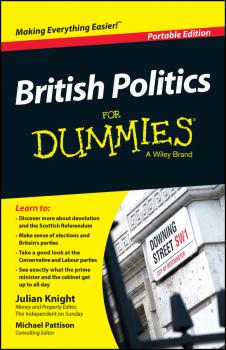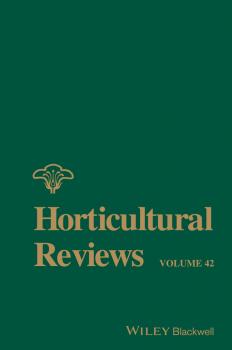MREADZ.COM - много разных книг на любой вкус
Скачивание или чтение онлайн электронных книг.Fundamentals of Gas Dynamics
Fundamentals of Gas Dynamics, Second Edition isa comprehensively updated new edition and now includes a chapter on the gas dynamics of steam. It covers the fundamental concepts and governing equations of different flows, and includes end of chapter exercises based on the practical applications. A number of useful tables on the thermodynamic properties of steam are also included. Fundamentals of Gas Dynamics, Second Edition begins with an introduction to compressible and incompressible flows before covering the fundamentals of one dimensional flows and normal shock waves. Flows with heat addition and friction are then covered, and quasi one dimensional flows and oblique shock waves are discussed. Finally the prandtl meyer flow and the flow of steam through nozzles are considered.
Welding Metallurgy and Weldability
Describes the weldability aspects of structural materials used in a wide variety of engineering structures, including steels, stainless steels, Ni-base alloys, and Al-base alloys Welding Metallurgy and Weldability describes weld failure mechanisms associated with either fabrication or service, and failure mechanisms related to microstructure of the weldment. Weldability issues are divided into fabrication and service related failures; early chapters address hot cracking, warm (solid-state) cracking, and cold cracking that occur during initial fabrication, or repair. Guidance on failure analysis is also provided, along with examples of SEM fractography that will aid in determining failure mechanisms. Welding Metallurgy and Weldability examines a number of weldability testing techniques that can be used to quantify susceptibility to various forms of weld cracking. Describes the mechanisms of weldability along with methods to improve weldability Includes an introduction to weldability testing and techniques, including strain-to-fracture and Varestraint tests Chapters are illustrated with practical examples based on 30 plus years of experience in the field Illustrating the weldability aspects of structural materials used in a wide variety of engineering structures, Welding Metallurgy and Weldability provides engineers and students with the information needed to understand the basic concepts of welding metallurgy and to interpret the failures in welded components.
Principles of Electrical Safety
Principles of Electrical Safety discusses current issues in electrical safety, which are accompanied by series’ of practical applications that can be used by practicing professionals, graduate students, and researchers. . • Provides extensive introductions to important topics in electrical safety • Comprehensive overview of inductance, resistance, and capacitance as applied to the human body • Serves as a preparatory guide for today’s practicing engineers
Introduction to Population Ecology
Introduction to Population Ecology, 2nd Edition is a comprehensive textbook covering all aspects of population ecology. It uses a wide variety of field and laboratory examples, botanical to zoological, from the tropics to the tundra, to illustrate the fundamental laws of population ecology. Controversies in population ecology are brought fully up to date in this edition, with many brand new and revised examples and data. Each chapter provides an overview of how population theory has developed, followed by descriptions of laboratory and field studies that have been inspired by the theory. Topics explored include single-species population growth and self-limitation, life histories, metapopulations and a wide range of interspecific interactions including competition, mutualism, parasite-host, predator-prey and plant-herbivore. An additional final chapter, new for the second edition, considers multi-trophic and other complex interactions among species. Throughout the book, the mathematics involved is explained with a step-by-step approach, and graphs and other visual aids are used to present a clear illustration of how the models work. Such features make this an accessible introduction to population ecology; essential reading for undergraduate and graduate students taking courses in population ecology, applied ecology, conservation ecology, and conservation biology, including those with little mathematical experience.
Optimization Modeling with Spreadsheets
An accessible introduction to optimization analysis using spreadsheets Updated and revised, Optimization Modeling with Spreadsheets, Third Edition emphasizes model building skills in optimization analysis. By emphasizing both spreadsheet modeling and optimization tools in the freely available Microsoft® Office Excel® Solver, the book illustrates how to find solutions to real-world optimization problems without needing additional specialized software. The Third Edition includes many practical applications of optimization models as well as a systematic framework that illuminates the common structures found in many successful models. With focused coverage on linear programming, nonlinear programming, integer programming, and heuristic programming, Optimization Modeling with Spreadsheets, Third Edition features: An emphasis on model building using Excel Solver as well as appendices with additional instructions on more advanced packages such as Analytic Solver Platform and OpenSolver Additional space devoted to formulation principles and model building as opposed to algorithms New end-of-chapter homework exercises specifically for novice model builders Presentation of the Sensitivity Toolkit for sensitivity analysis with Excel Solver Classification of problem types to help readers see the broader possibilities for application Specific chapters devoted to network models and data envelopment analysis A companion website with interactive spreadsheets and supplementary homework exercises for additional practice Optimization Modeling with Spreadsheets, Third Edition is an excellent textbook for upper-undergraduate and graduate-level courses that include deterministic models, optimization, spreadsheet modeling, quantitative methods, engineering management, engineering modeling, operations research, and management science. The book is an ideal reference for readers wishing to advance their knowledge of Excel and modeling and is also a useful guide for MBA students and modeling practitioners in business and non-profit sectors interested in spreadsheet optimization.
The Trainer's Handbook
A ready-to-use toolkit for delivering high-value training in any scenario The Trainer's Handbook is a comprehensive manual for designing, developing, and delivering effective and engaging training. Based on the feedback of workshop participants, readers, and instructors, this new third edition has been expanded to provide guidance toward new technologies, leadership training, distance learning, blended learning, and other increasingly common issues, with new case studies for each chapter. A systematic approach to training breaks the book into five parts that separately target analysis, design, development, delivery, and evaluation, giving you a comprehensive reference designed for quick look-up and easy navigation. New inventories, worksheets, job aids, checklists, activities, samples, and templates help you bring new ideas into the classroom, and updated instructor guide help you seamlessly integrate new and established methods and techniques. Training is increasingly expanding beyond the traditional instructor-led classroom; courses may now be delivered online or offsite, may be asynchronous and self-led, and may be delivered to individuals, small groups, or entire organizations. This book gives you a one-stop reference and toolkit to help you provide more effective training, regardless of class size, structure, subject, or objective. Explore new training styles adapted to different learning styles Design specialized instructional plans for groups, distance learning, and active training Blend creativity, logic and design principles to create more effective visuals Develop strategies for training leaders, training across cultures, and more Effective training means delivering useful information in a way that's accessible, approachable, understandable, and memorable. The Trainer's Handbook gives you the knowledge and framework you need to provide a high-value experience in any training scenario.
Fundamentals of Continuum Mechanics
A concise introductory course text on continuum mechanics Fundamentals of Continuum Mechanics focuses on the fundamentals of the subject and provides the background for formulation of numerical methods for large deformations and a wide range of material behaviours. It aims to provide the foundations for further study, not just of these subjects, but also the formulations for much more complex material behaviour and their implementation computationally. This book is divided into 5 parts, covering mathematical preliminaries, stress, motion and deformation, balance of mass, momentum and energy, and ideal constitutive relations and is a suitable textbook for introductory graduate courses for students in mechanical and civil engineering, as well as those studying material science, geology and geophysics and biomechanics. A concise introductory course text on continuum mechanics Covers the fundamentals of continuum mechanics Uses modern tensor notation Contains problems and accompanied by a companion website hosting solutions Suitable as a textbook for introductory graduate courses for students in mechanical and civil engineering
Emulsifiers in Food Technology
Emulsifiers are essential components of many industrial food recipes. They have the ability to act at the interface between two phases, and so can stabilise the desired mix of oil and water in a mayonnaise, ice cream or salad dressing. They can also stabilise gas/liquid mixtures in foams. More than that, they are increasingly employed in textural and organoleptic modification, in shelf life enhancement, and as complexing or stabilising agents for other components such as starch or protein. Applications include modifying the rheology of chocolate, the strengthening of dough, crumb softening and the retardation of staling in bread. This volume, now in a revised and updated second edition, introduces emulsifiers to those previously unfamiliar with their functions, and provides a state of the art account of their chemistry, manufacture, application and legal status for more experienced food technologists. Each chapter considers one of the main chemical groups of food emulsifiers. Within each group the structures of the emulsifiers are considered, together with their modes of action. This is followed by a discussion of their production / extraction and physical characteristics, together with practical examples of their application. Appendices cross-reference emulsifier types with applications, and give E-numbers, international names, synonyms and references to analytical standards and methods. This is a book for food scientists and technologists, ingredients suppliers and quality assurance personnel.
Horticultural Reviews, Volume 42
Horticultural Reviews presents state-of-the-art reviews on topics in horticultural science and technology covering both basic and applied research. Topics covered include the horticulture of fruits, vegetables, nut crops, and ornamentals. These review articles, written by world authorities, bridge the gap between the specialized researcher and the broader community of horticultural scientists and teachers.









